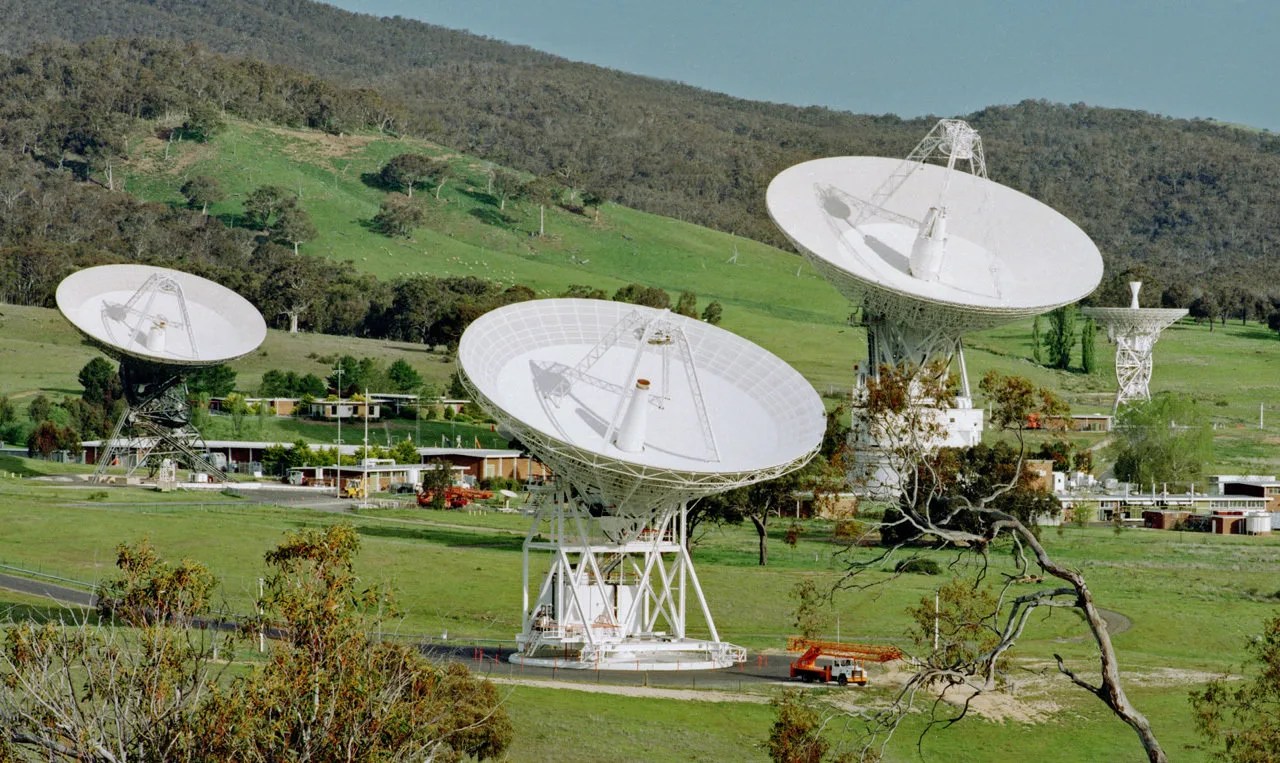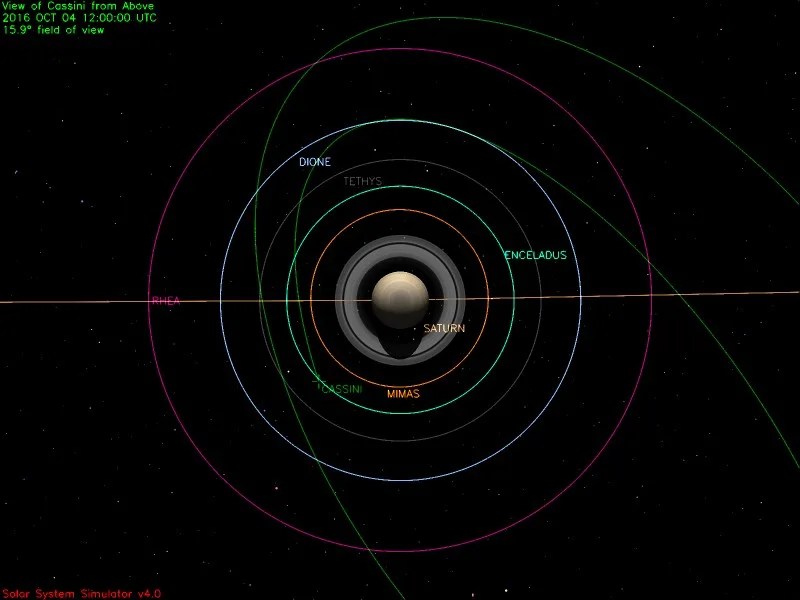4 min read

One of Cassini's many routine engineering activities is reaction wheel (RWA) biasing. The small reaction control thrusters are used to stabilize the spacecraft while the three reaction wheels are spun up or down to the ideal speeds for the next set of observations. As Cassini's orbital period decreases and the science activity pace increases, these activities will become much more frequent.
The week was fairly typical for the robot observatory as it accomplished 33 individual activities while orbiting Saturn. These were directed by more than one thousand stored, timed, flawlessly executed commands. Among them were the routine engineering activities like RWA biasing, sessions with the Deep Space Network (DSN) for communications and navigational tracking, plus of course, Cassini's many scientific observations.
Wednesday, Sept. 28 (DOY 272)
One day after Cassini's T-123 close encounter with Saturn's planet-like moon Titan, the Imaging Science Subsystem (ISS) and the Visible and Infrared Mapping Spectrometer (VIMS) spent 8.6 hours observing the weather in Titan's northern hemisphere. The Ultraviolet Imaging Spectrograph (UVIS) rode along observing for the first four hours. By the time these observations were complete, the spacecraft had receded to 725,000 kilometers from the target.
Thursday, Sept. 29 (DOY 273)
Cassini marked the start of its orbit #244 of Saturn when it coasted through apoapsis today, having reached an altitude of 1.398 million km and having slowed to 11,668 km per hour relative to the planet.
The Magnetospheric and Plasma Science (MAPS) instruments began a high-priority observation that would last three days. Once this was started, UVIS conducted a 6.5-hour Saturn auroral observation with VIMS and the Composite Infrared Spectrometer (CIRS) riding along. This observation was repeated for 15 hours on Friday, and then again for 4.3 hours on Saturday.
A three-day meeting of the VIMS science team wrapped up today in Berlin, Germany.
Friday, Sept. 30 (DOY 274)
A feature story this week discusses major discoveries relating to some of Saturn's more puzzling natural satellites: https://saturn.jpl.nasa.gov/science/moons .
Saturday, Oct. 1 (DOY 275)
ISS and VIMS spent 90 minutes observing Titan's weather from a distance of 1.4 million km.
Sunday, Oct. 2 (DOY 276)
Cassini spent the day communicating with the DSN and conducting a routine engineering activity to manage its attitude-control reaction wheel speeds.
Monday, Oct. 3 (DOY 277)
UVIS began its observations today with an 11-hour view looking "down" to Saturn's north-polar aurora, with CIRS and VIMS riding along. The view is simulated here.
Next, UVIS turned to observe Saturn's small icy moon Mimas for 2.3 hours with ISS and VIMS riding along. Next, UVIS observed a stellar occultation as the bright blue star Sigma Sagittarii passed behind Saturn's A ring. The instrument tracked particles in the ring at a minimum speed relative to the particles. Following this, two of Cassini's direct-sensing instruments, the Ion and Neutral Mass Spectrometer (INMS), and the Cosmic Dust Analyzer (CDA) collaborated on an observation of matter populating Saturn's inner magnetosphere.
Tuesday, Oct. 4 (DOY 278)
What a difference a day makes, in Cassini's short orbits of Saturn; this illustration shows today's view looking back northward from "below" the ringed giant.
The spacecraft sped through periapsis, going 48,483 km/hour, and coming within 279,000 km of Saturn's visible edge. UVIS observed Saturn's south-polar aurora for 10 hours, with CIRS, ISS and VIMS riding along. Next, the spacecraft turned to aim the Ion and Neutral Camera (INCA) at areas of interest in Saturn's magnetosphere; INCA is part of Cassini's unique Magnetospheric Imaging Instrument (MIMI).
The flight team created a new set of commands, based on the latest navigation team's orbit solutions. This set of 140 individual commands was designed to turn the spacecraft and fire its rocket thrusters to perform Orbit Trim Maneuver (OTM)-462. After a late-afternoon approval meeting, the commands were given to the Realtime Operations team (RTO). Later in the evening RTO would use a DSN antenna in Australia to transmit the commands to Cassini, for execution after midnight.
The Deep Space Network communicated with and tracked Cassini seven times this week, using stations in Australia. A total of 153 individual commands were uplinked, and about 1,310 megabytes of telemetry data were downlinked and captured at rates as high as 110,601 bits per second.
Wrap up:
Cassini is orbiting Saturn with a period of 9.6 days in a plane inclined 57.9 degrees from the planet's equatorial plane. The most recent spacecraft tracking and telemetry data were obtained on Oct. 5, using the 70-meter diameter DSN station in Australia. The spacecraft continues to be in an excellent state of health with all of its subsystems operating normally except for the instrument issues described at http://saturn.jpl.nasa.gov/anomalies .
Milestones spanning the whole orbital tour are listed here: https://saturn.jpl.nasa.gov/mission/saturn-tour/tour-dates .
Information on the present position and speed of the Cassini spacecraft may be found on the "Present Position" page at:
https://saturn.jpl.nasa.gov/mission/saturn-tour/where-is-cassini-now .








